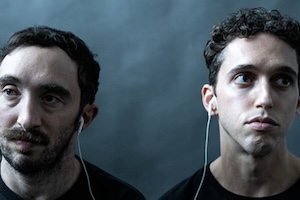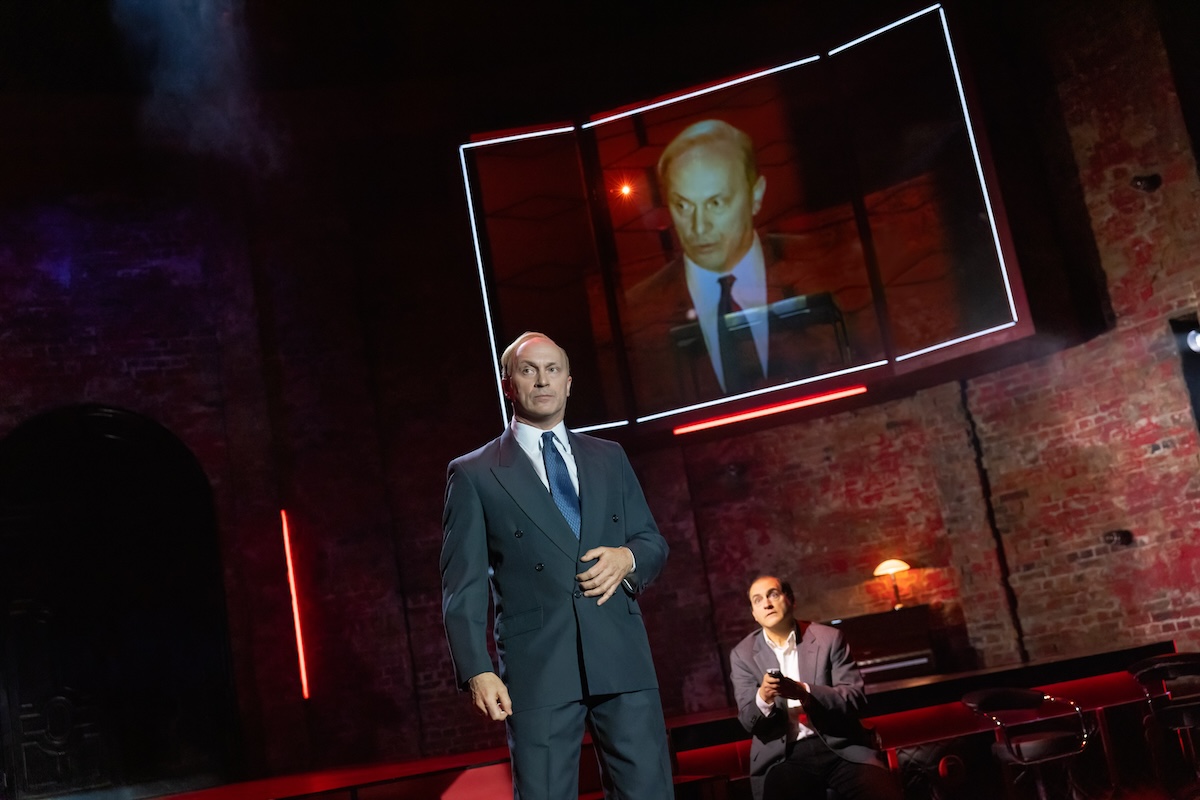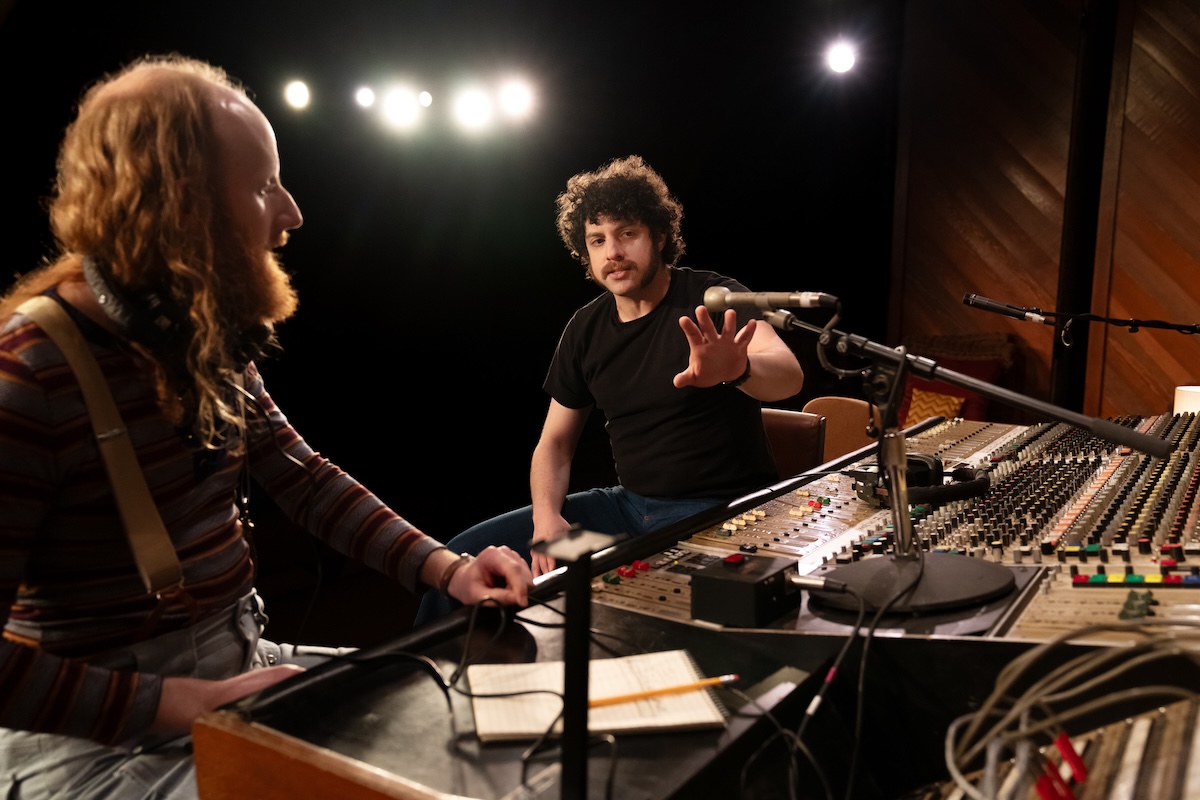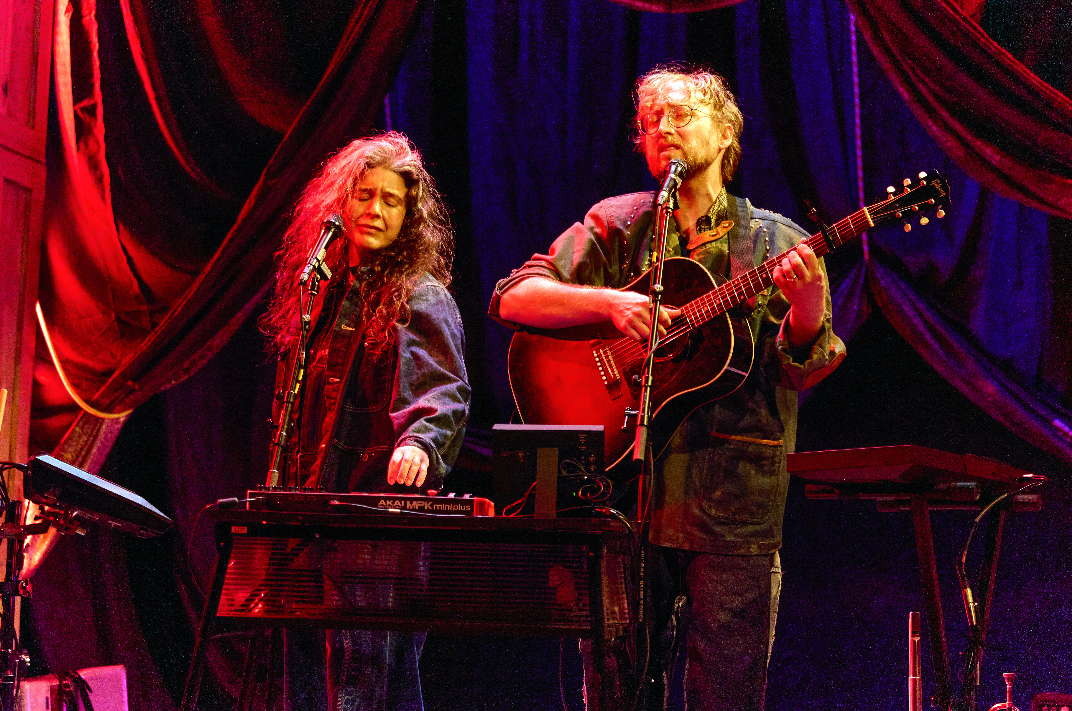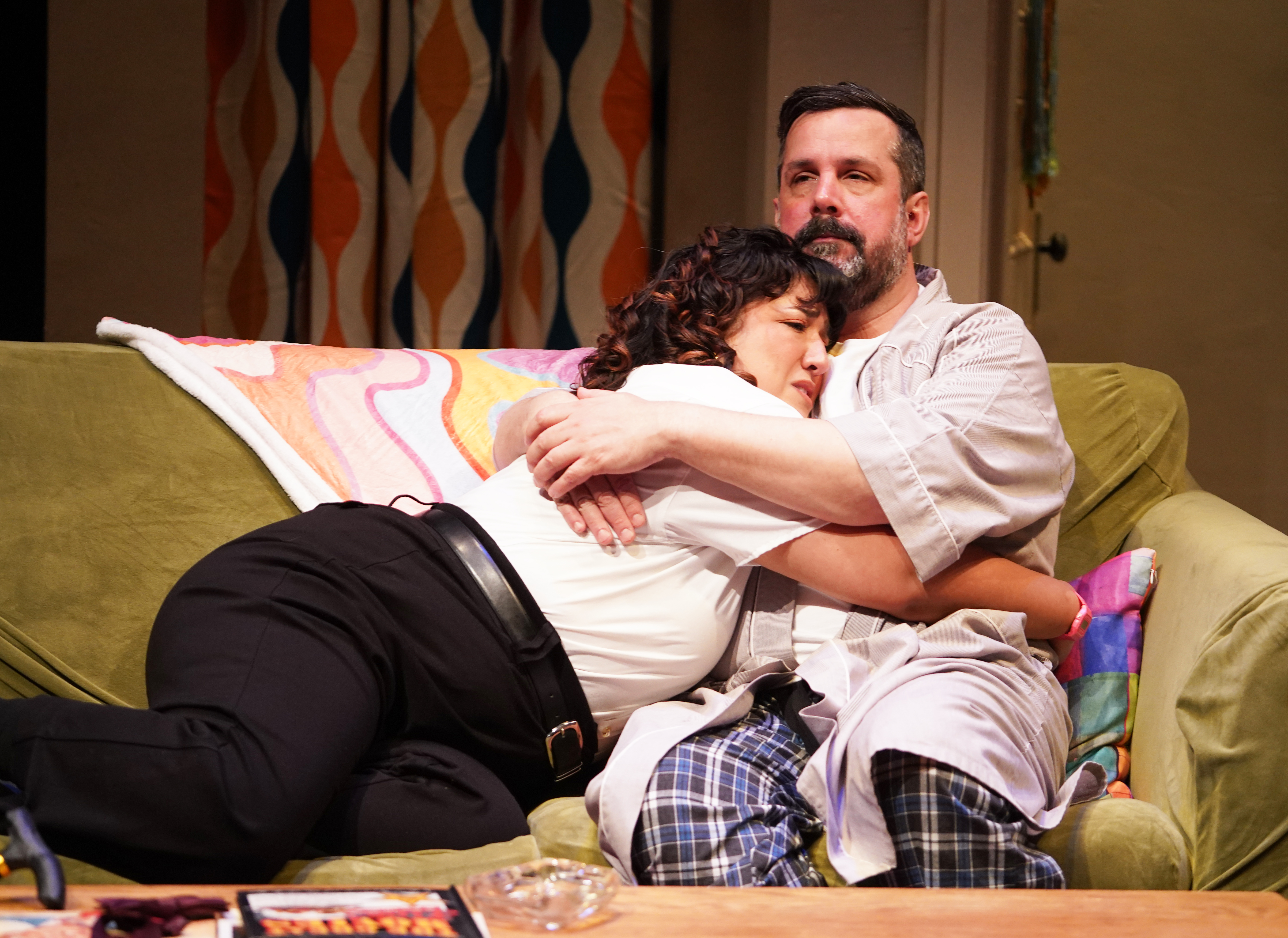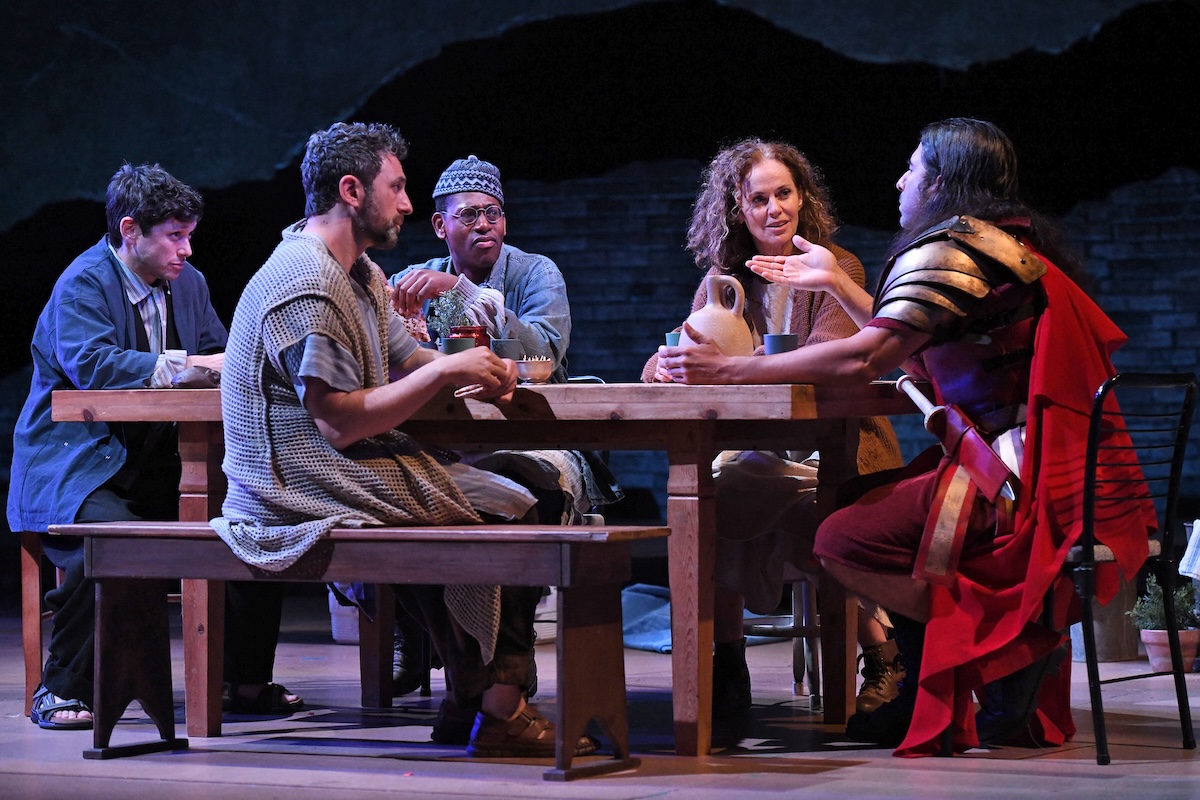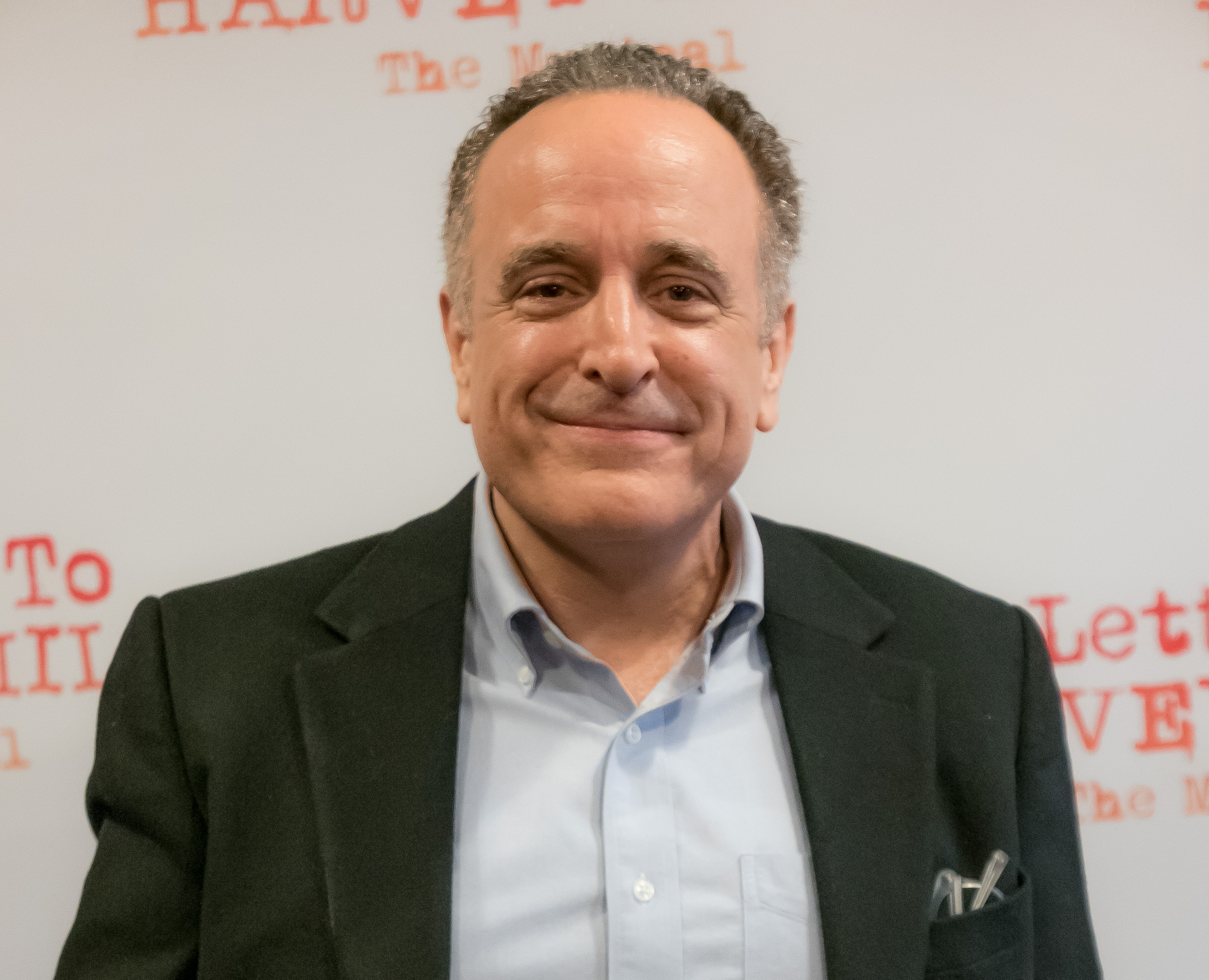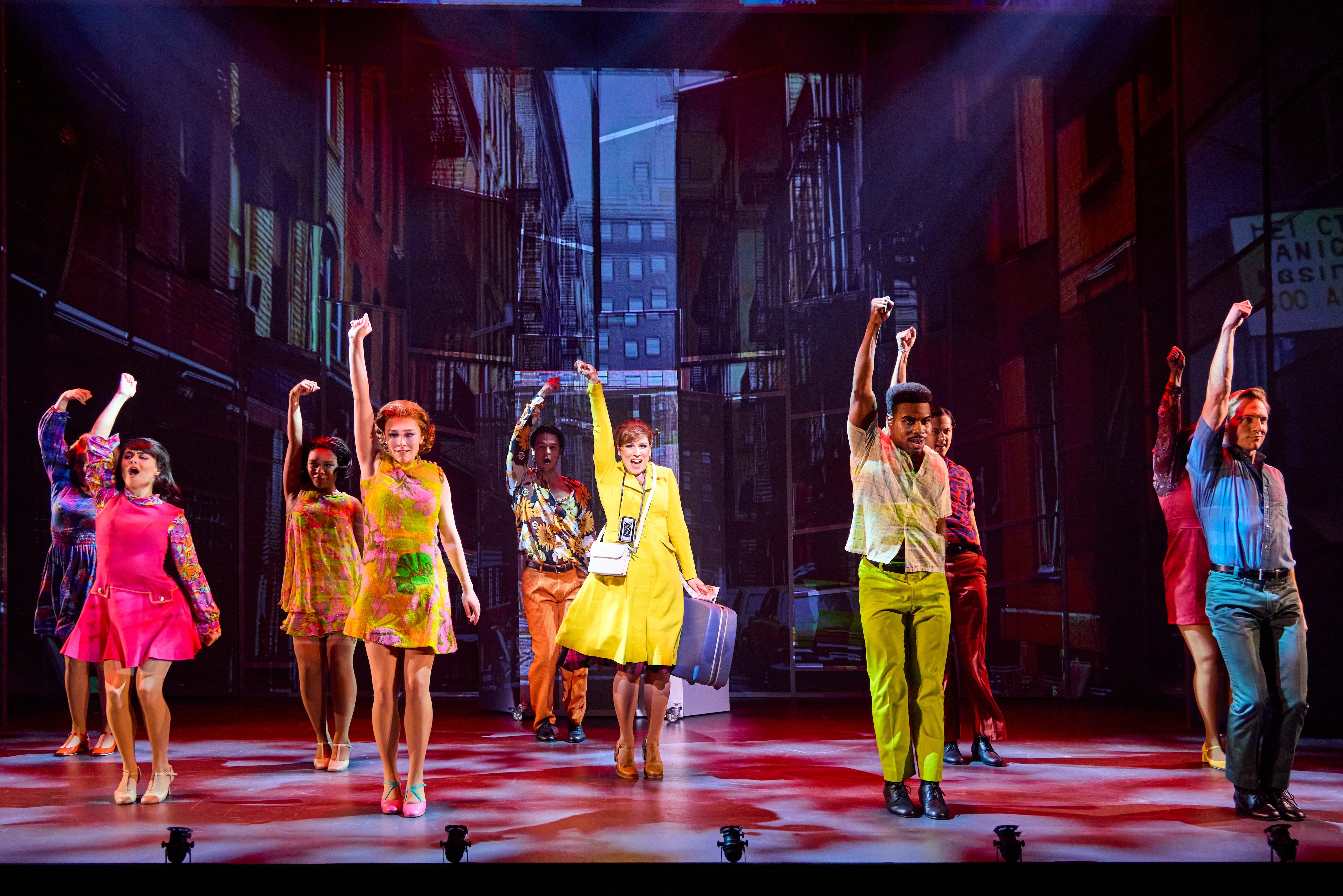Review: You Don’t Have to Do Anything Redefines the Memory Play
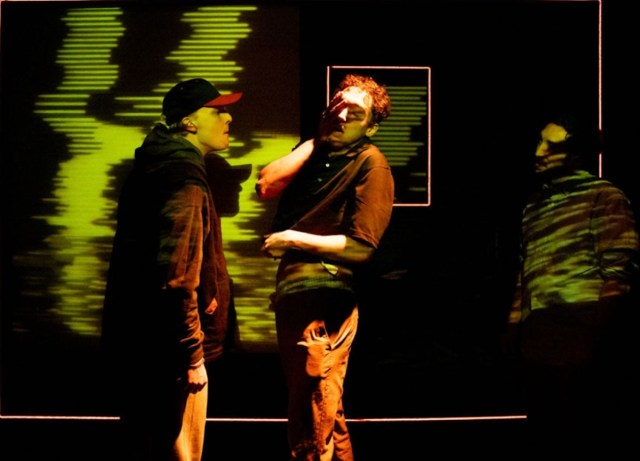
(© Maria Baranova)
Ryan Drake’s you don’t have to do anything at HERE feels a bit like it is in a collegiate black box, with the audience close to the performers in a tight underground playing space. This staging is fitting, however, for director Ryan Dobrin’s production, which uses schools and screens to frame the story.
Public school transplants Teddy (Yaron Lotan) and Clark (Will Dagger) are both new kids at Massachusetts prep school, starting seventh grade with Teddy’s eager friend Enid (Andrea Abello). Where Lotan and Abello shrink into their pubescent selves, Dagger’s Clark overpowers them – not just because the character, either held back or enrolled late, is 15 in middle school, but because Dagger’s facial hair contrasts with Lotan’s spindly physique. While the first two friends can pass for children in some moments, Dagger never does, whether he’s skipping orientation to look like a tough guy or imploring Teddy to compare their genitalia at a sleepover.
Marking the producing debut of Pulitzer Prize finalist Will Arbery (Heroes of the Fourth Turning), Drake’s you don’t have to do anything features certain Arberyisms familiar to any Off-Broadway aficionado: characters voicing their anxieties and fears bluntly, cursing and flailing in their insecurities, psyching themselves up for a crescendo of dramatics with any resolution denied. Despite social missteps and awkward flirting, Drake’s characters appear a tad too sophisticated to be in seventh grade; the impression that thirteen-year-olds don’t really speak with such clarity, or apologize to each other without prompting, builds until the now-adult Teddy interrupts the façade: Did these scenes of adolescence really happen? Or were they misremembered, altered by Teddy’s subconscious to justify his behavior and treatment of others?
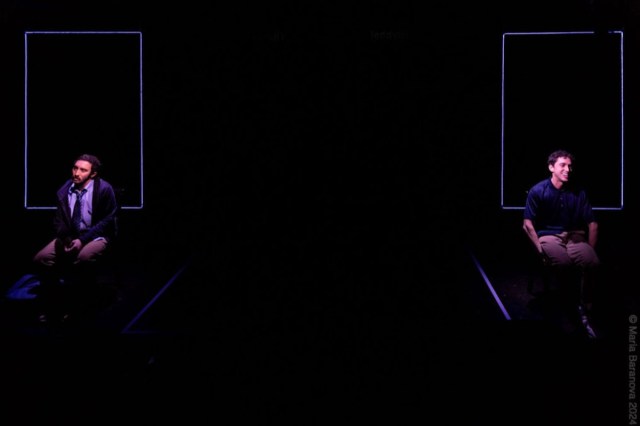
(© Maria Baranova)
Cat Raynor’s set is spare, appearing to be both Teddy’s bedroom and the compartmentalized chambers of his memory as he reflects on his school experience. Bentley Heydt and Molly Tiede’s lighting design further emphasizes this framing, moving characters from the fringes of Teddy’s mind to the center and throwing them away again as he rebels against his recollections.
Teddy’s mélange of memory is what makes you don’t have to do anything shine. The play lives in the murky waters of adolescent reminiscence, where the line between kids messing around and assault is blurred by both a would-be perpetrator and a potential victim. “When I use words I feel manipulative somehow,” the adult Teddy confesses, as if just speaking of his past will alter it. Did Clark coerce Teddy into a sexual act he wasn’t ready for, then stalk him for years, popping up again like a wart? Or did Teddy seek out Clark before he understood his own sexuality, taking advantage of a shared secrecy and then casting him aside to better fit in with his peers?
Some playwrights might answer these questions more directly, but Drake leaves them out in the open, heard but not categorized. Few works tackle the role that memory, buried and then uncovered, plays in the lives of our sexualities; few artists have a nuanced and delicate touch capable of brushing off the dirt. Where Enid wants to sort her classmates into neat rows of good and bad, cool and weird, Teddy and Clark grow to realize that a person can be hurt and hurt others at the same time. A relationship can be toxic and still define the way you relate to others, whether that’s Teddy’s relationship with Clark or the one he has with the violin he forces himself to practice like a religion. Dobrin’s final image is haunting in its simplicity and gravity, echoing like taut strings plucked out of place.



